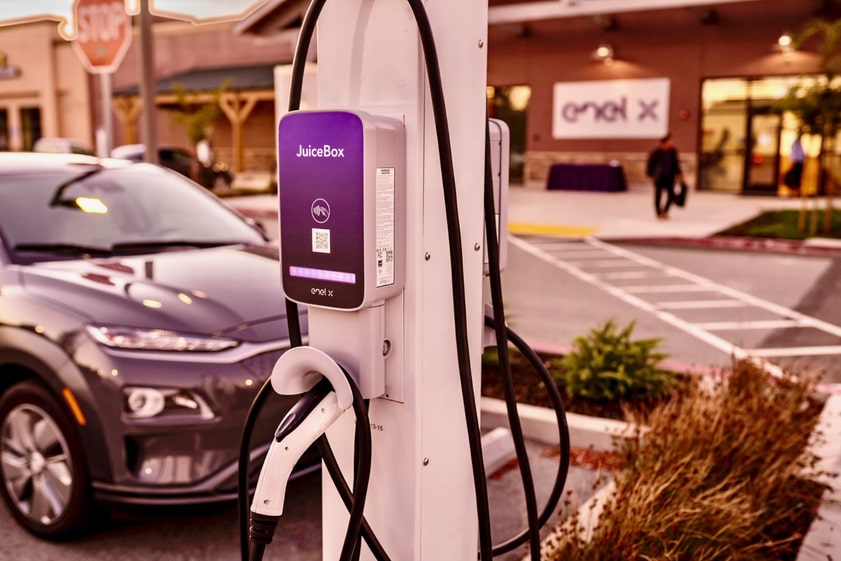4 Strategies to Improve Sustainability in the Workplace

Before we look at how you can increase workplace sustainability, let’s see why.
Today, everyone from consumers to investors to employees expects companies to pursue environmental, social, and governance (ESG) goals. Customers and prospects are more likely to trust your brand if you support social or environmental issues, according to Cone Communications’ Employee Engagement Study and CSR Study. Investors recognize the link between sustainability and financial performance, says the State Street Global Advisors’ ESG Institutional Investor Survey. Top employees and prospects often prefer companies that value and practice corporate sustainability.
Regardless of size, all companies play a critical role in reducing environmental pollution and reversing the effects of climate change. Let’s take a look at a holistic strategy involving four clean energy initiatives that build on each other to help you achieve a sustainable workplace:
● Renewable Energy Procurement
● On-Site Solar-Plus-Storage
● Demand Response Programs
● Electric Vehicle (EV) Charging
Renewable Energy Procurement
Renewable energy opportunities provide a starting point for a sustainable workplace. Additionally, purchasing clean electricity from solar or wind power instead of fossil fuels must serve your organization’s financial priorities as well as your sustainability goals. The transformation requires a custom approach that balances risks and benefits from renewable energy technologies, products, and market options.
The first step starts with education, discussion, and planning. For example, Enel X can help by analyzing organization-wide priorities. Cost-benefit and risk-management analyses help determine the right strategy for renewable energy management. Also, you’ll need to identify optimal renewable electricity generation sources and energy consumption levels to achieve your green energy goals. That search may call for soliciting bids and encouraging supplier competition. Doing so will help your business get the best price for renewable energy purchases and hedge against long-term volatility in energy markets.
Your organization will need insight into energy consumption and carbon emissions across your portfolio, along with the capability to easily report information to meet standards. To better understand the financial, environmental, legal risks, and timing priorities for renewable energy procurement, take a look at the 10 Rules for Renewable Energy Purchases.
On-Site Solar-Plus-Storage
Another option is bringing solar and battery energy storage on-site. Although solar power is a continual resource, it is intermittent. Overcast days and darkness limit the energy’s availability. By integrating battery power with solar energy, the impact of the entire system is increased, which can offer financial, environmental, and resiliency benefits.
Battery storage lets you stockpile power to use when you need it—when the sun doesn’t shine, when the price of electricity is highest, or when the power goes out. Adding battery storage reduces energy costs because businesses don’t have to consume energy from the grid—potentially using fossil-fuel power—when direct solar power isn’t an option. Battery storage also helps limit grid consumption during peak demand (and highest prices), flattening the load curve. Additionally, solar-plus-storage is a sustainable practice for backup power that lasts from several hours to several days.
In short, battery storage lets you make the most of renewable energy and helps you achieve a green workplace. Financing options are critical to giving your business the flexibility to choose a power purchase plan that meets your energy and payment needs.
Demand Response Programs
Battery storage also enables your organization to take advantage of demand response programs. These programs can help you earn money to reduce energy consumption. Your company receives payments for agreeing to reduce your demand on the grid in times of excessive electricity stress. For instance, Enel X has paid $700 million to customers as part of demand response programs since 2015. Utilities are also saved due to the sustainability strategy to decrease the demand for generators and transmission lines, thus reducing carbon emission, according to the U.S. Energy Information Administration.
The key is to maximize earnings while disrupting your business as little as possible. To make that tradeoff, you’ll want access to the best markets and programs for your loads. Meeting the needs of your business must always come first. To see how much your business could earn, try the Enel X demand response calculator.
Electric Vehicle (EV) Charging
You can build even more on renewable energy procurement and solar-plus-storage by taking your investment in sustainability outside and offering workplace EV charging. You’ll contribute to your organization’s sustainability goals and potentially earn Leadership in Energy and Environmental Design (LEED) certification points. Electric vehicle charging stations also increase the long-term value of your sustainable business’ real estate and enhance the brand image for everyone who visits. As new regulations require office buildings to adopt a green initiative with EV charging stations, you’ll be ahead of the curve.
In addition, on-site EV charging stations also support fleet electrification and the advantages of lower fuel costs, maintenance, and total cost of operation. By pairing EV charging with solar-plus-storage, you take energy savings a step further, decrease greenhouse gas emissions, and increase resiliency. If you offer charging to the public at large, you can also potentially create a new revenue stream. Load balancing lets your EV charging system administrators reduce and cap total EV charging load using software to keep demand in check without upgrading your infrastructure.
The Martha’s Vineyard Transit Authority (VTA) is setting the pace at the forefront of the public transportation industry with their microgrid and solar charging port project. In partnership with Enel X, they have installed solar canopy charging and an energy storage system which is a first-of-its-kind fully integrated, clean, resilient, and flexible public transportation system. This project will drastically reduce emissions on the Island (and) save the VTA thousands of dollars in operational, maintenance, and fueling costs.
Curious about sustainability solutions for your workplace and/or fleet? Contact us for a free consultation.


